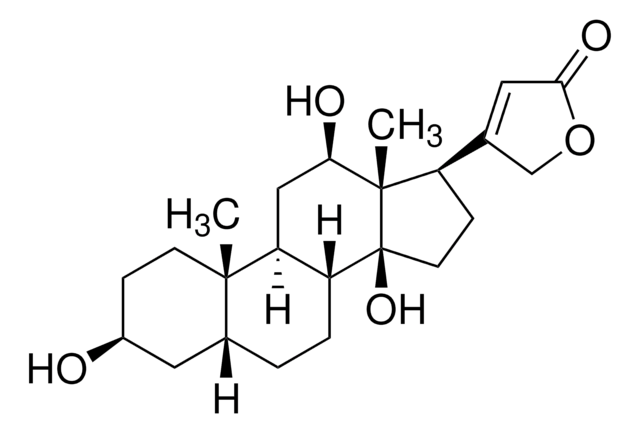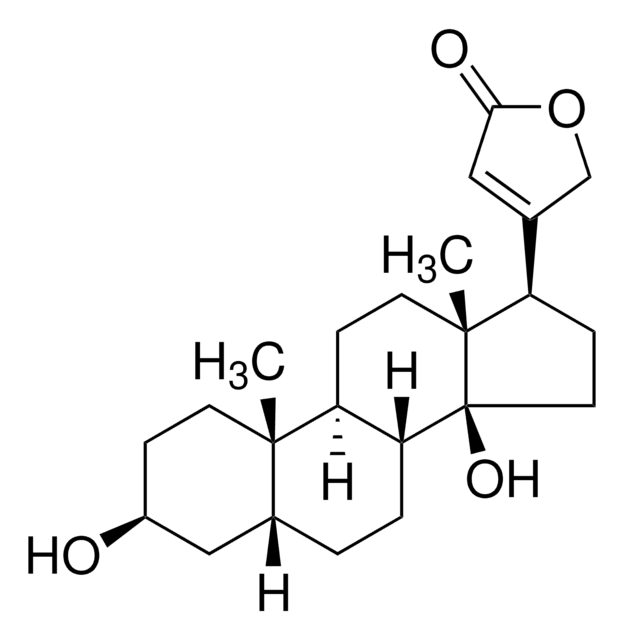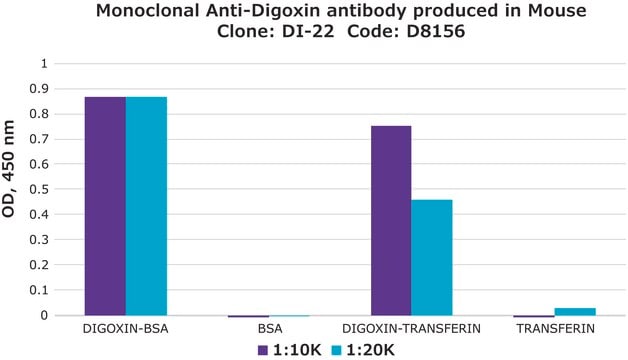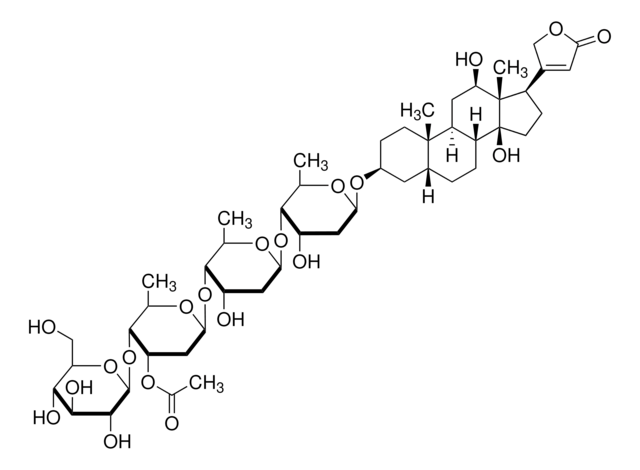D9026
Digoxigenin
analytical standard
Sinônimo(s):
3β,12β,14β,21-Tetrahydroxy-20(22)-norcholenic acid lactone, 3β,12β,14-Trihydroxy-5β,20(22)-cardenolide, 5β,20(22)-Cardenolide-3β,12β,14-triol, Lanadigigenin
About This Item
Produtos recomendados
grau
analytical standard
Nível de qualidade
Agency
EPA 1694
Ensaio
≥98% (HPLC)
técnica(s)
HPLC: suitable
gas chromatography (GC): suitable
pf
222 °C (lit.)
aplicação(ões)
environmental
food and beverages
forensics and toxicology
veterinary
Formato
neat
grupo funcional
ketone
temperatura de armazenamento
room temp
cadeia de caracteres SMILES
C[C@]12CC[C@H](O)C[C@H]1CC[C@@H]3[C@@H]2C[C@@H](O)[C@]4(C)[C@H](CC[C@]34O)C5=CC(=O)OC5
InChI
1S/C23H34O5/c1-21-7-5-15(24)10-14(21)3-4-17-18(21)11-19(25)22(2)16(6-8-23(17,22)27)13-9-20(26)28-12-13/h9,14-19,24-25,27H,3-8,10-12H2,1-2H3/t14-,15+,16-,17-,18+,19-,21+,22+,23+/m1/s1
chave InChI
SHIBSTMRCDJXLN-KCZCNTNESA-N
Procurando produtos similares? Visita Guia de comparação de produtos
Descrição geral
Aplicação
Palavra indicadora
Danger
Frases de perigo
Declarações de precaução
Classificações de perigo
Acute Tox. 1 Inhalation - Acute Tox. 1 Oral - Acute Tox. 2 Dermal
Código de classe de armazenamento
6.1A - Combustible acute toxic Cat. 1 and 2 / very toxic hazardous materials
Classe de risco de água (WGK)
WGK 3
Escolha uma das versões mais recentes:
Certificados de análise (COA)
Não está vendo a versão correta?
Se precisar de uma versão específica, você pode procurar um certificado específico pelo número do lote ou da remessa.
Já possui este produto?
Encontre a documentação dos produtos que você adquiriu recentemente na biblioteca de documentos.
Os clientes também visualizaram
Active Filters
Nossa equipe de cientistas tem experiência em todas as áreas de pesquisa, incluindo Life Sciences, ciência de materiais, síntese química, cromatografia, química analítica e muitas outras.
Entre em contato com a assistência técnica










